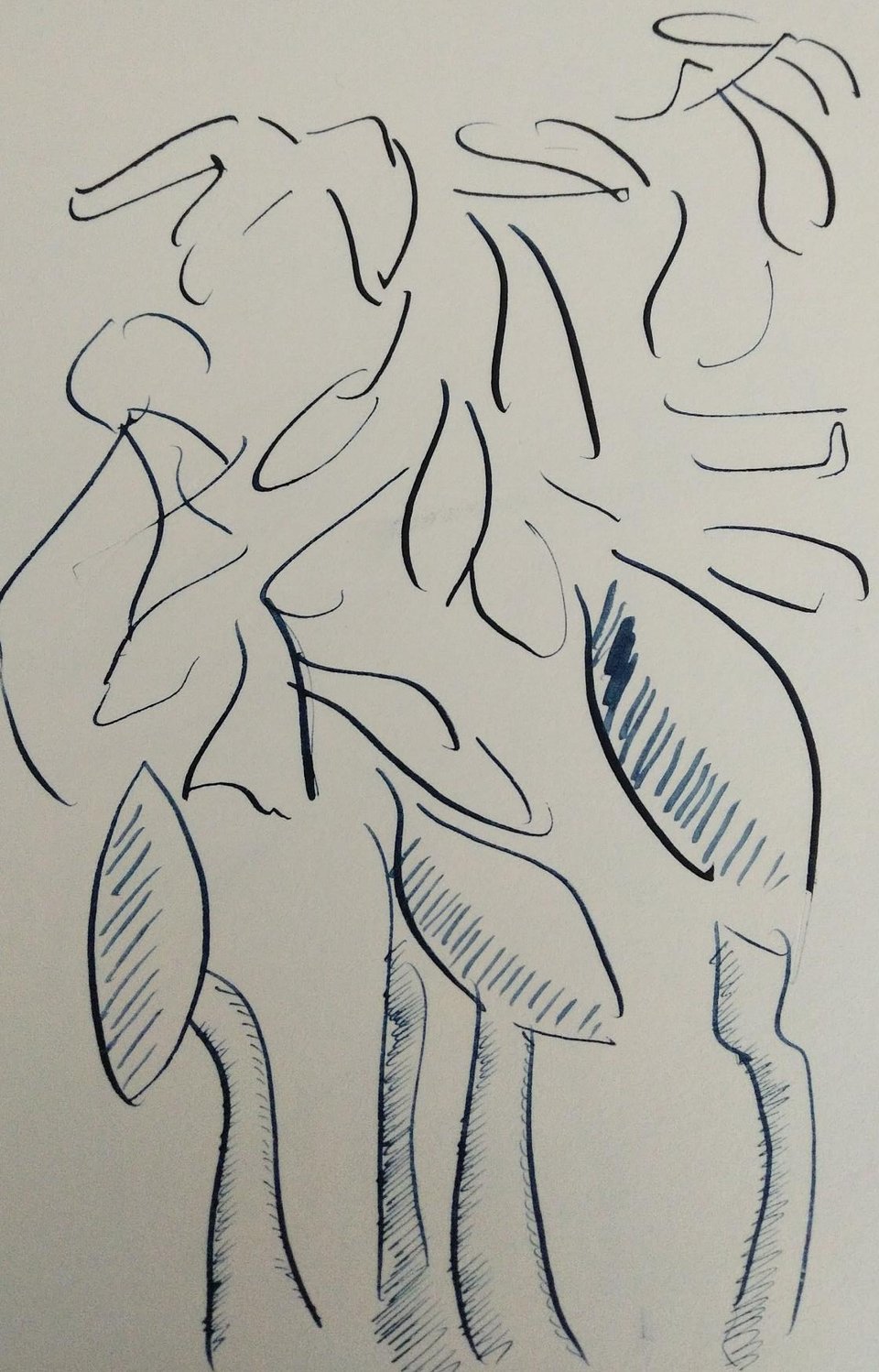
I had high hopes for this week’s edition, but we’re going start slow, and in lieu of anything approaching meaningful commentary I offer you these undeveloped efforts with a Zebra G Manga nib and Kakimori Toppuri ink (the paper is Traveler’s watercolor, simply because it was handy — for a sense of scale, the above comes from a B6 notebook).
Pigment inks lack the delicate shading you get with better dye inks, but they’re preferable for working with dip nibs as the greater viscosity lends itself to relying on the surface of the nib itself to serve in lieu of an ink reservoir. I must say, I’ve found myself nonplussed by the Zebra G, which has a reputation for flexibility — to my hand it feels a touch stiff, though it’s possible it’ll break in with use.
Last spring I wrote, in passing, about the relationship between patina and death: in learning to appreciate the accumulation of wear in the material things that attend our days, particularly clothing, tools, and household furnishings, those things habitually enter into contact with our bodies, we come to make peace with the accumulation of wear in the body itself. I sense a similar relationship between markmaking and death, though I’m at a loss, thus far, to clarify the nature of this relationship. Is it something to do with how markmaking consists in laying down residues of bodily motion — canonically, in the service of depicting the human form — in mineral and botanical pigments. Markmaking consists in tracing out the body, by turns its gestures and its form, in the materials drawn from the realms to which the body will return in death.
Don’t get me wrong, I don’t intend some kind of high-toned Normale sup’ meditation, the basic idea — markmaking is a way of rehearsing for death, or anticipating death, making peace with bodily finitude, etc — is one that has come to me more or less intact, and now I’m simply trying to understand where it might have come from. Earlier this year I was captivated by a report of parietal tableaux from Cueva Huenul 1, a rockshelter in northwestern Patagonia, some of which date to c.8,200 years ago and represent the oldest such artifacts in the region. Though CH1 does include some figurative tableaux, the dominant motifs consist in comb-like abstractions, executed in charcoal from carbonized vegetation. There are no signs of prolonged or habitual human habitation at CH1 — this was not a home but something more like a meeting place, the site of periodic, perhaps seasonal visits from surrounding communities. The tableaux, it is speculated, represent a kind of archive, a documentary record of local climate, water, economically significant plant and animal resources — but thus far there have been no proposals for how the marks in question might have served such a function.
You just read issue #36 of Stuff. You can also browse the full archives of this newsletter.
